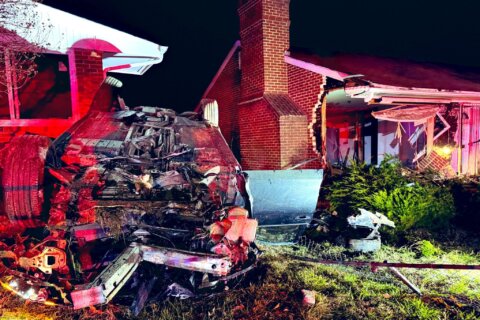Learning of a possible link between an empty World War I shell, found in 2020 during construction of a trail through Fort Totten Park, and the decadeslong Spring Valley cleanup of chemical weapons was concerning to D.C. Del. Eleanor Holmes Norton.
Now, after calling for a meeting with the heads of the National Park Service and the Army Corps of Engineers, Norton told WTOP she has been assured that no other evidence of World War I weapons or safety concerns have been discovered.
“I could not believe that we were finding unexploded ordnance,” said Norton. “Not after what we went through, in 1993.”
Almost three decades ago, a contractor digging a utility trench in Spring Valley uncovered buried military ordnance, which prompted the Army Corps of Engineers investigation that revealed homes on Glenbrook Road were built on top of chemical weapon burial pits.
The 1993 discovery prompted the Spring Valley cleanup in Northwest D.C. at the former American University Experiment Station used by the U.S. government for research and testing of chemical agents, equipment and munitions — once dubbed the “mother of all toxic dumps.”
In July 2020, the National Park Service discovered the unexploded shell during construction of a paved trail through wooded parkland that will replace an informal path neighbors in Michigan Park used to get to the Fort Totten Metro station.
As WTOP reported, the empty 75 mm shell found at Fort Totten had been modified for use as a chemical weapon, and was similar to the weapons discovered in Spring Valley, according to Dan Noble of the Corps of Engineers, project manager of the Spring Valley cleanup.
Norton said she was told the ordnance discovered at Fort Totten had likely been there since 1992, when contaminated soil from Spring Valley was trucked to a landscaping project at the Fort Totten Metro station.
“I think that’s how the unexploded ordnance was transferred to Fort Totten, where we didn’t expect to find it,” she said.
The transfer of soil 30 years ago was a prequel to the Spring Valley cleanup.
“What we know is that over at Fort Totten, where the D.C. Metro project was underway, they had a need for soil, and on Glenbrook Road, where they were building the houses, they had excess soil,” Noble said. “We know that an arrangement was made to transfer some soil, from Glenbrook Road, over to Fort Totten.”
In 1992, the heavy equipment operator spreading Glenbrook Road soil at the Fort Totten Metro site felt sickened from the fumes of the soil, and the U.S. Park Service ordered it be removed.
“We had a very in-depth meeting,” with park service and Army Corps officials, said Norton. “There has been a thorough search of the entire area, and no additional ordnance or issues had been turned up — I hope I can rely on that, this time.”
“They have assured me that they have done a very thorough search of the entire area,” Norton added. “That’s all I have to go on, and I’m going to have to hold them to it.”
Allen Hengst, who has been blogging about the issue for the last 15 years, said he thinks the contaminated soil was moved from the Fort Totten Metro site a few hundred yards away to the area where the trail is being constructed.
Hengst said he believes the park service search after the 2020 discovery was perfunctory, and limited to the immediate trail area in Fort Totten. Hengst suggests a wider search would likely uncover more chemical remnants from the Spring Valley site.
“When they say the entire area, that’s what I’m going to hold them to,” Norton said.








